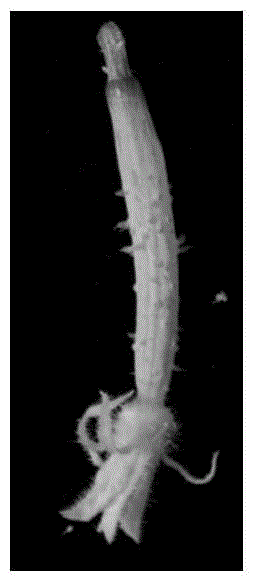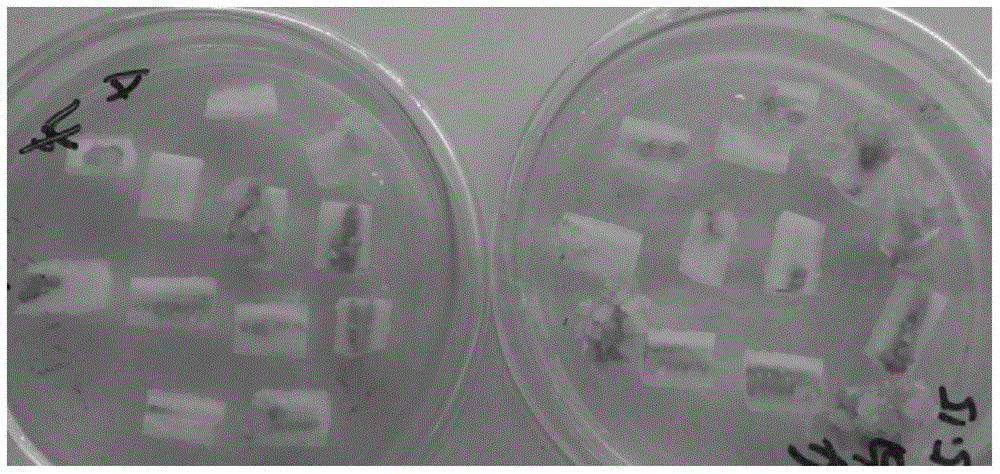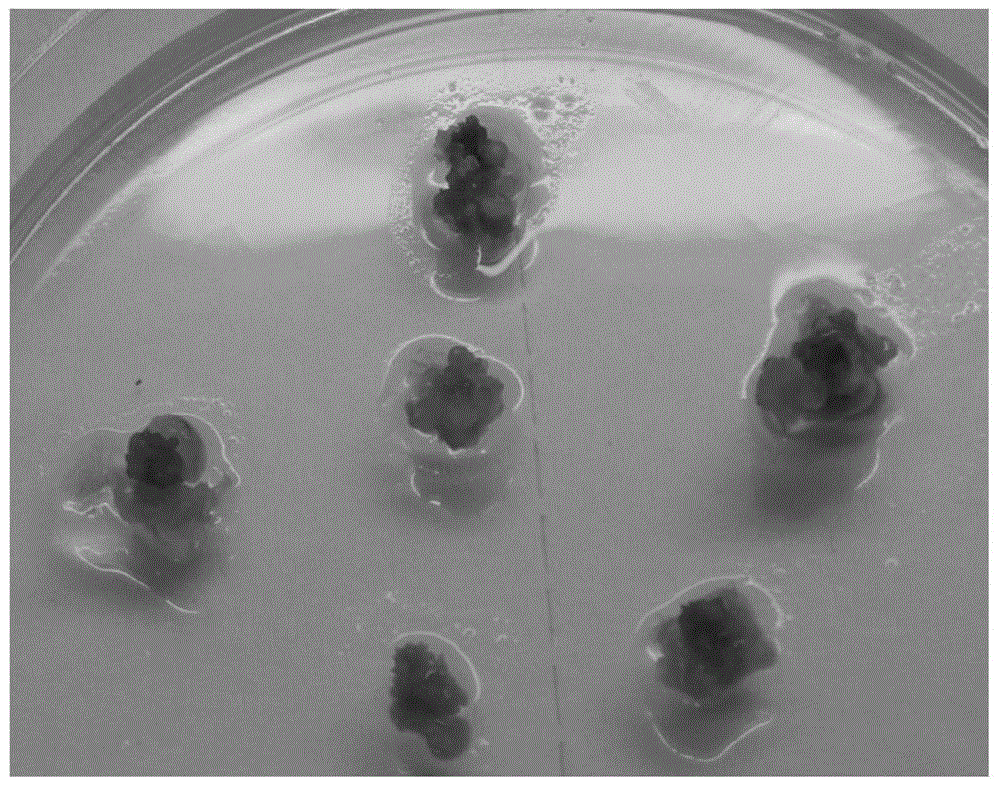In Vitro Regeneration Method of Cucumber Ovary
An in vitro regeneration and ovary technology, which is applied in plant regeneration, horticultural methods, botany equipment and methods, etc., can solve the problems of low regeneration frequency of regenerated plants, large genotype constraints, heavy workload, etc., and achieve seed saving Quantity, reduced culture steps, strong differentiation ability
- Summary
- Abstract
- Description
- Claims
- Application Information
AI Technical Summary
Problems solved by technology
Method used
Image
Examples
Embodiment 1
[0061] Embodiment 1 The in vitro regeneration method of cucumber ovary of the present invention
[0062] 1. Experimental materials
[0063] South China-type hybrid cucumber variety 'Baisitiao';
[0064] Planted in the plastic greenhouse of the Institute of Horticulture, Sichuan Academy of Agricultural Sciences, the row spacing, water and fertilizer management are managed according to the general level.
[0065] 2. Experimental culture medium
[0066] Callus induction medium: take NB medium as the basic medium, add sucrose at a final concentration of 30g / L, agar at 7g / L, TDZ at 1.5mg / L, and NAA at 0.2mg / L;
[0067] Callus proliferation and differentiation medium: use MS medium as the basic medium, add sucrose at a final concentration of 30g / L, agar at 7g / L, 6-BA at 2.5mg / L, and NAA at 0.01mg / L;
[0068] Adventitious seedling elongation medium: take MS medium as the basic medium, add sucrose at a final concentration of 30g / L, agar at 7g / L, and 6-BA at 0.5mg / L;
[0069] The r...
Embodiment 2
[0109] Embodiment 2 The in vitro regeneration method of cucumber ovary of the present invention
[0110] 1. Experimental materials
[0111] With embodiment 1.
[0112] 2. Experimental culture medium
[0113] Callus induction medium: take NB medium as the basic medium, add sucrose at a final concentration of 30g / L, agar at 5g / L, TDZ at 1.2mg / L, and NAA at 0.5mg / L;
[0114] Callus proliferation and differentiation medium: use MS medium as the basic medium, add sucrose at a final concentration of 30g / L, agar at 5g / L, 6-BA at 1.5mg / L, and NAA at 0.01mg / L;
[0115] Adventitious shoot elongation medium: use MS medium as the basic medium, add sucrose at a final concentration of 30g / L, agar at 5g / L, and 6-BA at 0.3mg / L;
[0116] The rooting medium is: taking MS medium as basic medium, adding sucrose with a final concentration of 30g / L, agar with 7g / L, and IBA with 0.05mg / L.
[0117] 3. Experimental method
[0118] (1) Material handling
[0119] With embodiment 1.
[0120] (2) I...
Embodiment 3
[0132] Embodiment 3 The in vitro regeneration method of cucumber ovary of the present invention
[0133] 1. Experimental materials
[0134] Cucumber variety 'Chuanlu No. 1', a local variety in South China;
[0135] Planted in the plastic greenhouse of the Institute of Horticulture, Sichuan Academy of Agricultural Sciences, the row spacing, water and fertilizer management are managed according to the general level.
[0136] 2. Experimental culture medium
[0137] With embodiment 1.
[0138] 3. Experimental method
[0139] (1) Material handling
[0140] With embodiment 1.
[0141] (2) Induction of callus
[0142] With embodiment 1.
[0143] (3) Callus proliferation and differentiation
[0144] The light yellow callus was transferred to the callus proliferation and differentiation medium for culture, and the callus area increased, gradually changing from light yellow to yellow green. Make the area larger than 3cm 2 The callus was then cut to a size of 0.5 cm 2 Small ca...
PUM
 Login to View More
Login to View More Abstract
Description
Claims
Application Information
 Login to View More
Login to View More - R&D
- Intellectual Property
- Life Sciences
- Materials
- Tech Scout
- Unparalleled Data Quality
- Higher Quality Content
- 60% Fewer Hallucinations
Browse by: Latest US Patents, China's latest patents, Technical Efficacy Thesaurus, Application Domain, Technology Topic, Popular Technical Reports.
© 2025 PatSnap. All rights reserved.Legal|Privacy policy|Modern Slavery Act Transparency Statement|Sitemap|About US| Contact US: help@patsnap.com



